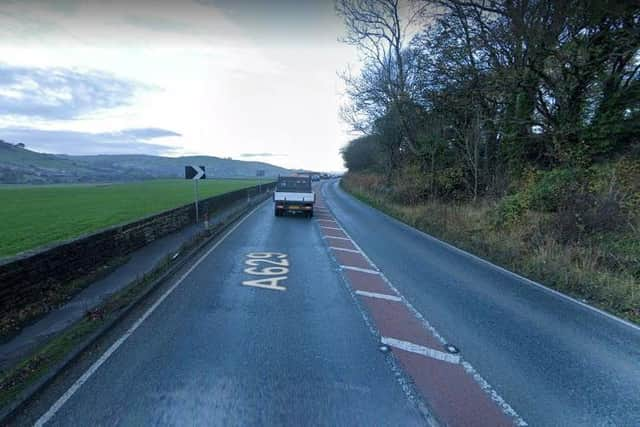Oliver Barraclough inquest: Teenager died in collision in North Yorkshire in car driven by his twin
Oliver Barraclough, 19, was the only one of the six people involved in the head-on collision between two cars in January 2020 to die as a result and assistant coroner for North Yorkshire Oliver Longstaff attributed this to him not wearing a seatbelt, unlike the five survivors.
Apprentice bricklayer Oliver, from Cononley, worked at the same Keighley construction firm as his twin William, whose VW Polo they were travelling in on the evening of the crash with their friend Max Batey.
Advertisement
Hide AdAdvertisement
Hide AdMr Batey, who sustained serious neck injuries, remembered himself and driver William wearing their seatbelts but Oliver, who was a back seat passenger, was found without his on by emergency services and is thought to have lost consciousness within seconds and died from multiple injuries including a heart rupture. William also suffered critical injuries.


The Polo was negotiating a bend in the carriageway when it crossed onto the other side of the road and struck a BMW driven by drayman Stuart Shoesmith, who was travelling with his partner and their seven-year-old granddaughter to McDonald's in Skipton. All escaped serious injury.
The inquest was told that William and Mr Batey had spent the day together in Keighley and returned to the twins' home to watch a football match. Oliver had been playing football that day and decided to go with them when William drove Mr Batey home so he could visit a Co-op on the journey.
Mr Shoesmith said he recalled seeing the Polo driver 'fighting' with the steering wheel on the BMW's side of the road just before the moment of impact. He said he believed the Polo was travelling too fast on the bend, though police evidence said the car's speedometer had stopped at 37mph in a 60mph zone.
Advertisement
Hide AdAdvertisement
Hide AdMr Batey recalled 'skidding' around the corner but could not be certain and had no further memory of the collision. He described William as a 'good' driver.
A nurse driving home from her shift at Bradford Royal Infirmary, Maria Farnsworth, stopped at the scene and found both twins unresponsive and Mr Batey conscious and moaning. Oliver was slumped forward in the footwell and she could see he was not wearing his seatbelt, which was stowed.
The DVLA provided a statement to the hearing confirming that William Barraclough had declared an epilepsy diagnosis to them in 2016, but following further investigations he was passed fit to drive and issued with his licence.
The twins' stepfather Jamie Binns said he had 'heard a rattling noise' when driving the Polo himself and booked it in for an inspection which was due to take place after the collision.
Advertisement
Hide AdAdvertisement
Hide AdNorth Yorkshire Police forensic collision investigator PC Patrick Green was able to establish from friction burns that William and Mr Batey had been wearing seatbelts but that Oliver was unrestrained. He found no braking or steering defects on the Polo but that the suspension dampener was leaking, which was consistent with the concerns identified by Jamie Binns.
From a reconstruction he determined that the Polo had crossed into the BMW's path and skidded from marks left on the road surface. He believed the defect to the shock absorbers, which would have created a 'bouncing' sensation, could have affected William's control of the car, but could not be certain.
No alcohol was found in either driver's system.
Recording a conclusion of death in a road traffic accident, Mr Longstaff said: "One car was on the correct side of the road and one was not. In all likelihood, Oliver would have survived had he worn his seatbelt. That is the real tragedy."
Comment Guidelines
National World encourages reader discussion on our stories. User feedback, insights and back-and-forth exchanges add a rich layer of context to reporting. Please review our Community Guidelines before commenting.
